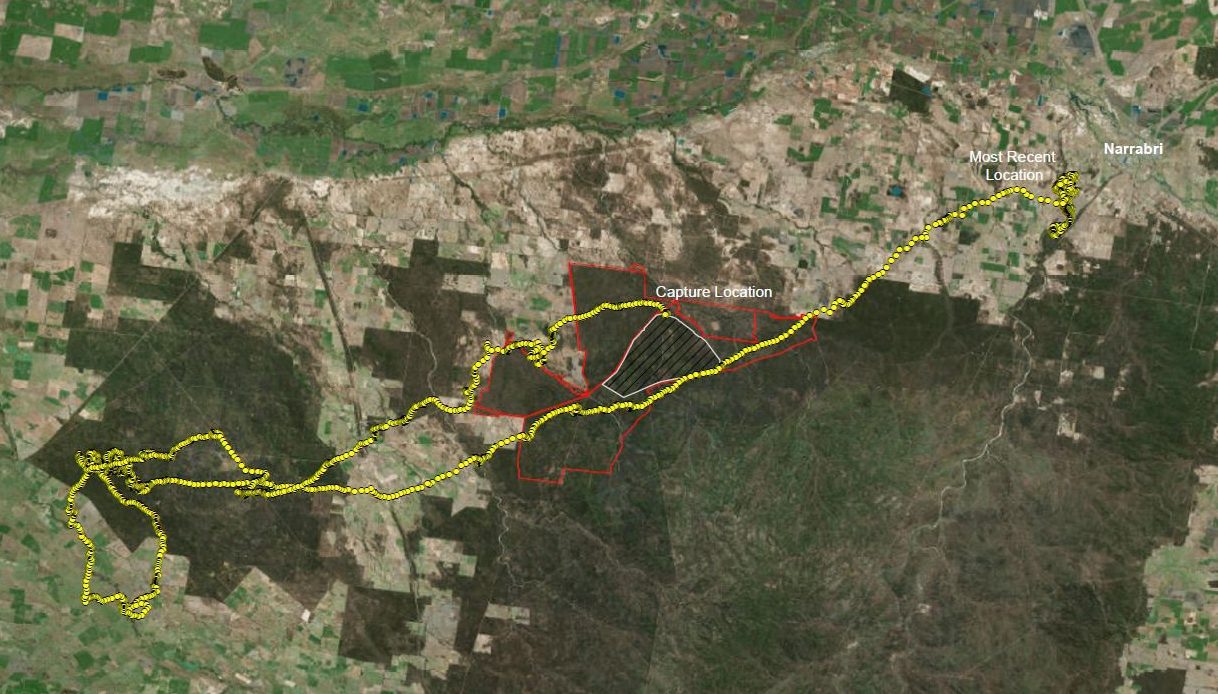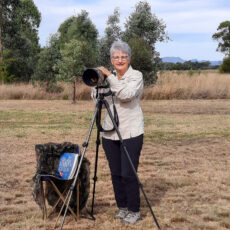Australia has the worst mammal extinction rate in the world.
“Feral cats pose one of the most significant threats to our wildlife and have been the major contributing factor to these extinctions,” the Australian Wildlife Conservancy says. “It is estimated that they kill around five million animals every night across the continent.”
AWC large-scale fenced areas, such as those at Pilliga, Mallee Cliffs and other AWC sanctuaries, are the only way to protect our native fauna from feral predators until a continent-wide solution to the feral cat crisis is found.
The Narrabri-based AWC team has overseen the successful re-introduction of native species into the Pilliga sanctuary in recent years.
Now, AWC and the NSW Government have announced the arrival of the first baby Bilbies to be born at Mallee Cliffs National Park in more than a century.
The new arrivals were discovered by AWC ecologists during routine surveys to monitor population health.
Until AWC and the NSW Government reintroduced Bilbies to the Pilliga State Conservation Area in 2018 and Mallee Cliffs in 2019, this iconic Australian mammal had not been seen in NSW National Parks for more than 100 years.
The Bilbies were released into a feral predator-free breeding area, constructed as part of a historic partnership between AWC and the NSW Government under its Saving our Species program.
The Bilbies will eventually be released into a 9570-hectare fenced area at Mallee Cliffs that is set to become the largest feral predator-free safe-haven on mainland Australia.
AWC chief executive Tim Allard says the results of these surveys are encouraging.
“When we brought Bilbies back to Mallee Cliffs, there were 17 pouch young which were not marked for identification, and 50 adults. The exciting news is that our ecologists captured 53 individuals during the last survey and 21 were not marked, meaning that some of them were conceived and born at Mallee Cliffs,” Mr Allard said.
“There is also an abundance of healthy Bilbies with pouch young, including one carrying triplets.”
Mr Allard said there has been a similar Bilby baby boom in the Pilliga.
In addition, Bridled Nailtail Wallabies were reintroduced in 2019 and, promisingly, this endangered species is reproducing within the feral predator-free breeding area. This project – which represents one of the most ambitious rewilding programs in Australia – will ultimately see 10 regionally extinct and nationally threatened mammal species returned to NSW.
“Without the threat of feral cats and foxes, we expect that all of the locally-extinct species that AWC and the NSW National Parks and Wildlife Service (NPWS) are returning to Mallee Cliffs and the Pilliga will be able to establish footholds in NSW once again.”
Cat tracked 170km
AWC scientists made a significant discovery which demonstrates the expansive range and mobility of feral predators.
A feral cat was tracked traversing an incredible 170 kilometres in Pilliga forest, evidence of just how difficult it is to manage these predators.
Feral cats kill over 2000 animals across Australia every minute.
Narrabri based lead researcher, AWC Wildlife ecologist Dr Andrew Carter, says the implications of this research were significant.
“If you drew a 170km radius from all towns in Australia, I don’t think there’d be much land left that would be out of reach of wandering cats.
“In other words, stray cats from towns could easily end up in our bush eating our animals,” Dr Carter said.
The travelling cat insight bolstered Dr Carter’s previous research on feral predators at Scotia Wildlife Sanctuary.
The movement data obtained from tracked cats at Scotia and the Pilliga allows AWC to accurately estimate the density of these feral predators – and will help inform strategies for managing feral cats and foxes in open (unfenced) landscapes.
AWC’s network of fenced predator free areas offer immediate and permanent refuge for some of the largest remaining populations of Australia’s most endangered mammals – such as Bridled Nailtail Wallabies, Bilbies, Bettongs and Numbats.
However, no existing control method can reliably suppress densities of feral cats to allow highly susceptible mammals to survive outside fenced areas.
Since 2015 AWC has been undertaking a major research project on feral predators, as part of a wider, ‘beyond the fence’ strategy.
Incorporating several phases, the aim of AWC’s pioneering research is to determine whether cats and foxes can be sufficiently suppressed in unfenced landscapes to levels which allow native mammals to increase and/or re-establish self-sustaining populations.
The ultimate goal is the sustainable reintroduction of threatened native mammals to unfenced landscapes.
To order photos from this page click here



